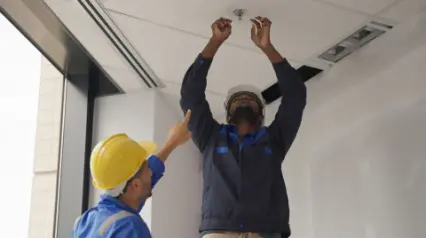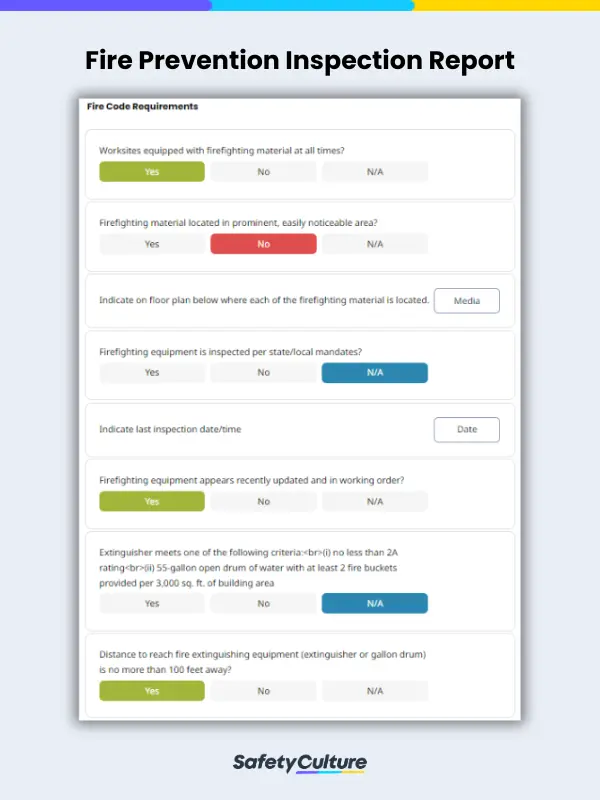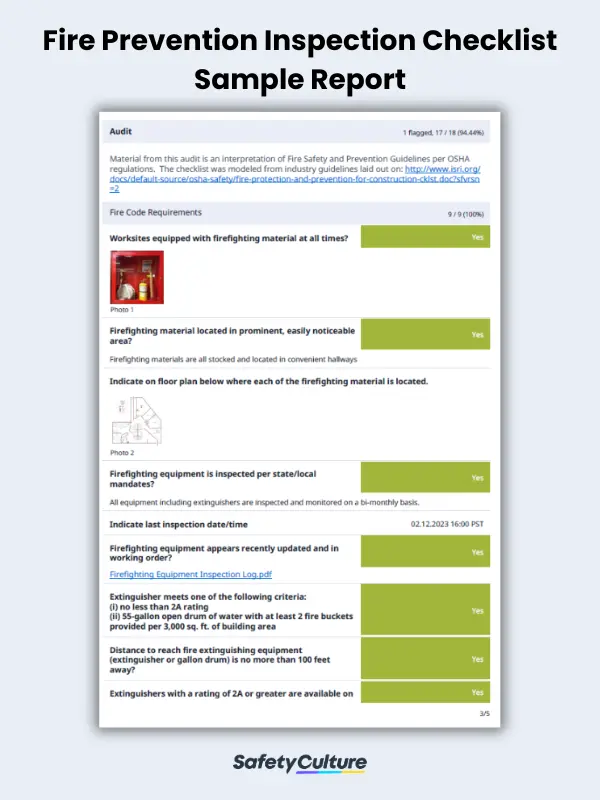What is a Fire Inspection Checklist?
A fire inspection checklist is a detailed document guiding inspectors through a systematic assessment of a building’s fire safety measures. It covers critical areas such as fire alarms, exits, extinguishers, electrical systems, and evacuation plans. The checklist aims to identify potential fire hazards, ensure regulatory compliance, and contribute to a safer environment.
Importance and Benefits of a Fire Inspection Checklist
Fire safety is a critical aspect of protecting lives and property. One essential tool in ensuring fire safety is a fire inspection checklist. A fire inspection checklist is a tool to improve the way organizations identify potential hazards, address existing issues, and create a culture of fire safety. By using a checklist, organizations can conduct fire inspections more easily and thoroughly, ensuring everything’s well covered and addressed.
What Should be Included in a Fire Inspection Checklist?
A fire inspection checklist should cover critical elements to ensure a comprehensive fire safety program. The key inclusions are the following:
- Building Structure and Exits — Inspectors evaluate the structural integrity of buildings and ensure that exits are clear, accessible, and well-marked.
- Fire Alarm Systems — A functional fire alarm system is critical. This section covers the inspection of alarms, testing procedures, and responsiveness.
- Fire Extinguishers — An examination of the placement, condition, and adequacy of fire extinguishers is crucial for a swift response to potential fires.
- Electrical Systems — Faulty electrical systems can be a significant fire hazard. The checklist includes a thorough examination of wiring, circuits, and electrical appliances.
- Emergency Evacuation Plans — Ensuring that emergency evacuation plans are in place and known to all occupants is essential for a safe and orderly evacuation during a crisis.
How to Use This Checklist in a Fire Safety Inspection
Completing a fire inspection checklist captures the progress of the inspection, helping the inspector to have a seamless check of fire safety measures.
To guide you through the process, here’s a quick guide on how to use this checklist:
- Begin by recording the details of the inspection for proper documentation.
- Document the condition of fire safety equipment, ensuring that all items are in proper working order.
- Assess the building’s compliance with safety regulations and guidelines, covering areas such as exits, alarm systems, and emergency evacuation plans.
- Evaluate the effectiveness of fire prevention measures, including the proper storage of flammable materials and the condition of electrical systems.
- Record observations on the overall maintenance of fire extinguishers and other fire-fighting equipment.
- Gauge the awareness of occupants regarding fire safety practices, including knowledge of emergency exit routes.
- Ensure that there’s a documented set of procedures for responding to fire emergencies, and assess the proficiency of staff in implementing them.
Once completed, the inspection report can be exported in a file of your choice (PDF, Word, Excel, Weblink). See the sample image below of what an exported fire inspection report looks like:
Frequently Asked Questions about Fire Inspection Checklists
Fire inspections should be conducted regularly, the frequency of which is determined by local regulations, building codes, and the nature of the establishment. Typically, inspections may be scheduled annually or semi-annually, but specific requirements can vary.
Trained and qualified fire inspectors or safety officers are typically responsible for conducting fire inspections. These individuals possess the necessary expertise (and even certifications or licenses) to assess fire safety measures and ensure compliance with regulations.
A qualified fire inspector should have relevant training and certifications in fire safety, such as the Certified Fire Inspector (CFI), Fire Inspector I or II from the National Fire Protection Association (NFPA). These include a deep understanding of fire codes and safety regulations and having practical experience in conducting thorough inspections. However, this all depends on the employer and compliance requirements to meet. Hence, always consult your local fire safety regulations.




